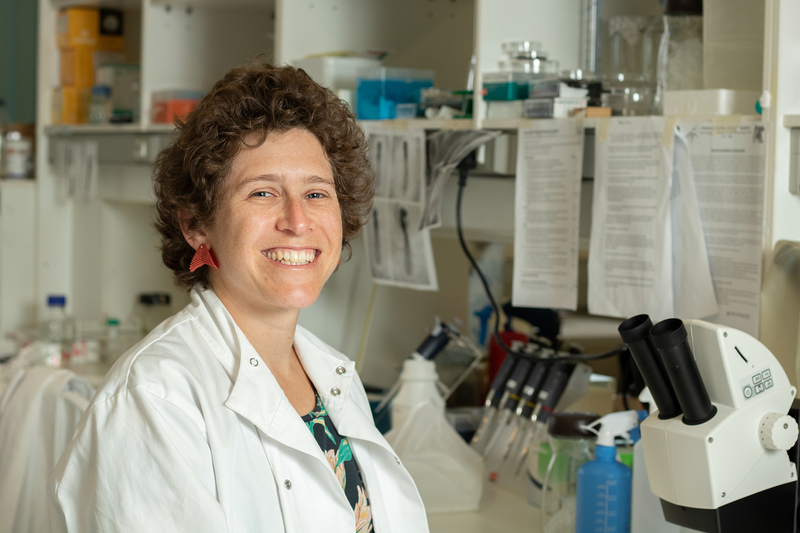5 questions with Dorit Hockman, developmental biologist
16 September 2019 | Story Lisa Boonzaier. Photo Libby Young. Read time 4 min.
Dr Dorit Hockman’s career to date has taken a full circle: starting with her undergraduate and master’s degrees at the University of Cape Town, continuing her research at institutions in the United Kingdom – and back again. Now a UCT lecturer, she was recently awarded an inaugural 2019 Future Leaders – African Independent Research Fellowship.
1. What research areas are you mainly interested in?
My research investigates the regulation of genes during development.
The genome is a recipe for building a body and each gene is an ingredient. The regions of the genome surrounding genes contain instructions for how to use them, such as when to activate a gene and how long to keep it active. My research aims to identify these instructions and investigate how their use changes as the body grows and matures.
2. Why is this research important?
The regions of the genome that contain these instructions were long described as ‘junk DNA’. Now, we know that they are essential for ensuring normal gene function. Mutations in these areas can lead to developmental disorders and disease.
On the other hand, beneficial changes have contributed to diversifying the animal kingdom over time. By studying these instructions, we gain insight into the mechanisms of both disease and evolution.
3. What is the greatest value you gained from studying internationally?
By doing my PhD at the University of Cambridge and my postdoctoral research at the University of Oxford, I was able to learn from and work with world-leaders in developmental biology. I am now a member of an incredibly generous international community of collaborators who help me with access to the latest technologies and are an amazing forum for brainstorming new ideas.
4. What are the biggest opportunities you see for this field?
The rapid development and increasing availability of next-generation DNA sequencing tools is transforming the reach of my field. Researchers used to be able to investigate only a handful of genes at once and were limited to the few widely studied ‘model organisms’ that had genomic resources.
Now, we can use the latest technologies to study the functioning of the entire genome of pretty much any animal.
5. You are a scientist and an artist. Do the two complement each other?
Yes! I often feel like my research is arts and crafts in the lab. The experiments I do often require building new tools, like using eyelash knives for dissection, and my data collection usually involves taking images of beautiful embryos or displaying data analyses in eye-catching and informative ways.
I love that I can submit my images to competitions, so I can share the beauty of science with the world.
Bonus question: What will the FLAIR Fellowship mean for your research?
The FLAIR fellowship has allowed me to start a new research programme investigating gene regulation in the human brain. Through collaborations with neurosurgeons and scientists here at UCT, I am developing a locally relevant resource that will help us understand how gene regulation changes as the brain grows from childhood to adulthood, as well as how this regulation is altered in response to disease.
 This work is licensed under a Creative Commons Attribution-NoDerivatives 4.0 International License.
This work is licensed under a Creative Commons Attribution-NoDerivatives 4.0 International License.
Please view the republishing articles page for more information.










